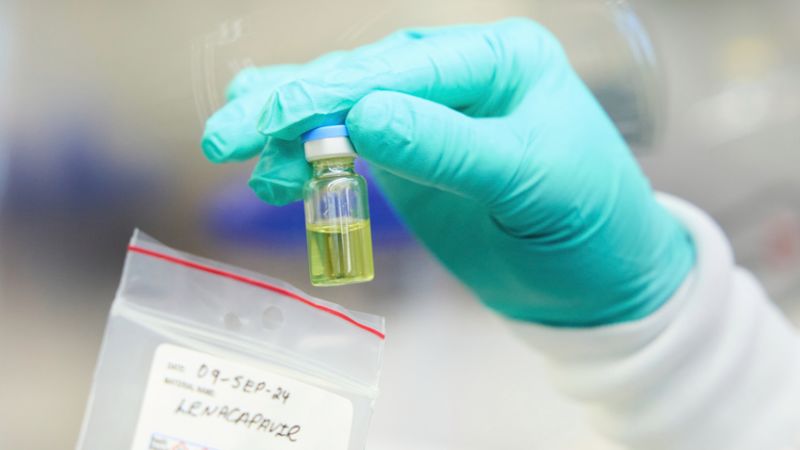In a recent significant development in the medical field, the U.S. Food and Drug Administration (FDA) has approved a drug that has long been used in the treatment of HIV infections to also be used as a preventive measure against the virus. The drug, lenacapavir, produced by Gilead Sciences, has now been sanctioned for use as an injection twice a year under the brand name Yeztugo. Clinical trials of lenacapavir have demonstrated that it can substantially diminish the risk of HIV infection, providing protection that surpasses existing options for pre-exposure prophylaxis (PrEP).
Historically, PrEP has been a crucial method used for preventing HIV infections, with options typically involving daily oral medications like Truvada or bi-monthly injections, such as Apretude. With this latest advancement, the lenacapavir injection forms a new addition to the prevention toolbox, marking it as the first and only twice-yearly injection available for individual use. Dr. Jared Baeten, the Senior Vice President of Clinical Development at Gilead Sciences, explained the mechanism by which PrEP works: it creates a protective barrier in the bloodstream that immobilizes HIV before it can establish an infection.
The implications of HIV, which spreads largely through unprotected sexual intercourse and needle sharing, are profound. The virus attacks the immune system and, if untreated, may culminate in acquired immunodeficiency syndrome (AIDS). While the number of new HIV cases in the U.S. has declined over the years, approximately 1.2 million individuals are currently diagnosed with the virus, and a notable 13% remain unaware of their infection status. This situation underscores the need for effective preventive measures like lenacapavir.
Efforts to research and develop lenacapavir showcased promising results. The PURPOSE 2 clinical trial found that even with only two yearly doses, lenacapavir can reduce the risk of HIV infection by an astounding 96%. Adding to the efficacy narrative, the PURPOSE 1 trial indicated that lenacapavir also achieved 100% prevention efficacy in women. As Dr. Baeten articulated, the convenience factor for lenacapavir stands out; it allows individuals the option to receive treatment discreetly every six months without the constant reminders that daily pill regimens necessitate.
The reality of HIV stigma and misconceptions also surfaces in patient narratives. Ian Haddock, a participant in the PURPOSE 2 trial, revealed the stigma associated with his sexual identity during his teenage years in rural Texas, where he faced prejudiced remarks about the risk of contracting AIDS due to his sexual orientation. Nevertheless, his involvement in the trial has given him a transformative perspective, allowing him to advocate against stereotypes as the founder of a nonprofit named the Normal Anomaly Initiative.
Since beginning his journey with daily PrEP pills in 2015, Haddock struggled with side effects and the challenge of adhering to a strict daily regimen. This led him to swiftly partake in the lenacapavir trial after its announcement in January 2024, reporting only minor injection-site irritation as a side effect. Encouraged by the positive outcomes and FDA approval, he plans to continue his lenacapavir injections and hopes to elevate awareness about available HIV prevention tools.
The approval of lenacapavir for HIV prevention represents a groundbreaking milestone, as participants in the PURPOSE 2 trial demonstrated nearly 99.9% remained uninfected following the injection regimen. Addressing concerns about the drug’s accessibility and affordability, experts assert that lenacapavir could potentially be mass-produced at significantly lower costs than its current pricing, hence making it more accessible to those at risk.
Lenacapavir joins Apretude, which was approved in 2021, as a new hope in the elimination of new HIV infections. As the landscape of HIV prevention evolves, there is overarching optimism from health professionals like Dr. Baeten, who envisions a future free from HIV. However, progress remains contingent on adequate funding for research, prevention programs, and combating stigma associated with the disease. The topic remains urgent, especially amidst funding cuts to HIV initiatives proposed in the current budgetary framework. Strong advocacy is needed to ensure resources persist, ultimately aiming to avert future HIV infections and health crises.



